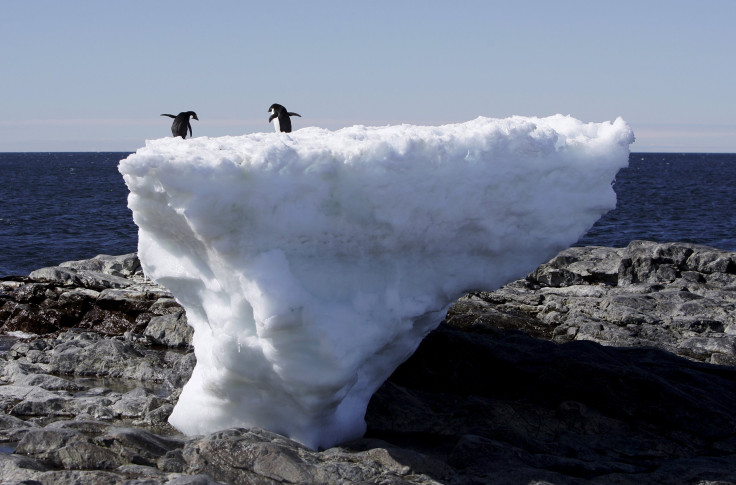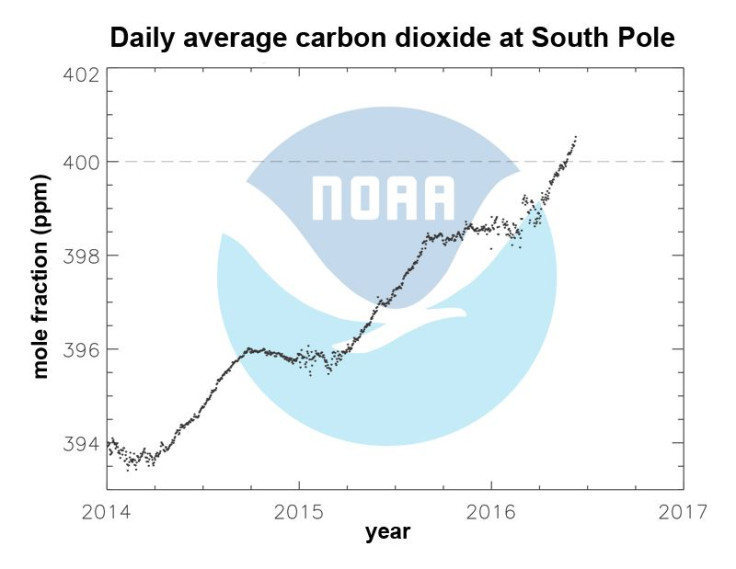Climate Change: Antarctica Carbon Dioxide Levels Cross 400 Parts Per Million For First Time In 4 Million Years

In May 2013, the carbon dioxide monitoring station at Mauna Loa, Hawaii, recorded a major milestone — the concentration of atmospheric carbon dioxide had crossed the symbolic “red line” of 400 parts per million for the first time since record-keeping began. Now, three years and several record-breaking months later, the last station on Earth without a 400 ppm reading has finally reached it.
In a statement released Wednesday, the National Oceanic and Atmospheric Administration (NOAA) revealed that, for the first time in 4 million years, carbon dioxide levels at the South Pole have passed the threshold of 400 ppm. The measurement, taken on May 23, shows that the world’s most remote continent has finally caught up with its populated counterparts, insofar as the effects of anthropogenic climate change are concerned.

“The far southern hemisphere was the last place on Earth where CO2 had not yet reached this mark,” Pieter Tans, the lead scientist of NOAA's Global Greenhouse Gas Reference Network, said in the statement. “Global CO2 levels will not return to values below 400 ppm in our lifetimes, and almost certainly for much longer.”
Although the 400 ppm threshold is largely symbolic, scientists have been using it as an important reminder of how human activities — especially the indiscriminate use of fossil fuels — are irrevocably affecting Earth’s climate. Carbon dioxide is an extremely potent greenhouse gas, and the steady rise in its atmospheric concentration since the industrial revolution has been attributed as the main cause of the inexorable rise in global average temperature.
Globally, the carbon dioxide average reached 399 ppm last year, and the average for this year is now almost certain to cross 400 ppm. If this happens, 2016 would become the fifth consecutive year in which carbon dioxide levels have grown more than 2 ppm.
“We know from abundant and solid evidence that the CO2 increase is caused entirely by human activities,” Tans said. “Since emissions from fossil fuel burning have been at a record high during the last several years, the rate of CO2 increase has also been at a record high. And we know some of it will remain in the atmosphere for thousands of years.”
© Copyright IBTimes 2025. All rights reserved.






















